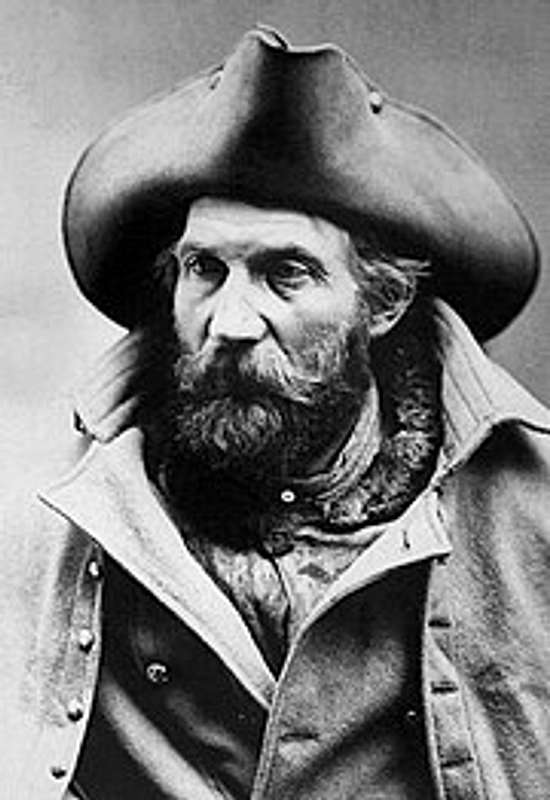-
 1359 Hits
1359 Hits
-
 0% Score
0% Score
-
 0 Votes
0 Votes
|
|
Mountain/Rock |
|---|---|
|
|
43.98200°N / 109.86649°W |
|
|
Park |
|
|
Hiking, Mountaineering, Scrambling, Skiing |
|
|
Spring, Summer, Fall |
|
|
12156 ft / 3705 m |
|
|
Overview
Apocryphally known as the "most remote mountain in the Lower 48", Younts Peak (12,156') is the second highest summit in the Southwest Absaroka (as defined by Thomas Turiano in Select Peaks). This peak is non-technical and most of the difficulty lies in the long approach - a minimum of 22 miles is required and most parties take a longer, on-trail approach.

The first known ascent of Younts Peak probably occurred in 1893 when surveyor Frank Tweedy visited and built a small cairn on the summit. Due to the peak's substantial prominence, it was a semi-frequent target of early surveyors that used the mountain's peak for triangulation. In modern times the peak is most often climbed by horsepackers, hunters, and NOLS groups - the Class 1 southwest ridge makes for a very easy, but spectacular climb.
Visitors should be aware that this region is very dense grizzly habitat - the author of this page has seen as many as 14 individuals on a single trip, including up to 8 in the southern bowl simultaneously. This is particularly true during the migration of the army cutworm (or miller) moth when bears will visit east facing talus/boulder fields to flip rocks and consume thousands of the moths at a time.
Getting There
While all approaches are in the range of a multi-day trip, there are multiple options for the prospective visitor.
From Cody, WY one can take the Southfork Road about 35 miles to Hunter Creek Road - about 5 miles later the driver arrives at the Boulder Basin trailhead. From here one can hike up the South Fork of the Shoshone River to Marston Creek - continue following the trail up to Marston Pass where the final approach to Younts Peak begins.
From Jackson, WY most approaches will begin at the Turpin Meadow trailhead - from Jackson drive through Grand Teton NP to Moran, WY. About 3 miles after Moran Junction, turn north onto Buffalo Valley Road and continue approximately 10 miles to the Turpin Meadows trailhead. From here one follows the North Buffalo Fork to the Soda Fork, then - once to Ferry Lake - follows Lost Creek to upper Marston Pass.
From Dubois, WY the Brooks Lake trailhead is a very compelling option. In good weather, a traverse of the Buffalo Plateau (along the Continental Divide) is the most direct route available to approach Younts Peak. This route is predominantly off-trail, but non-technical and offers the opportunity to easily hit other highpoints along the divide.
A number of recorded trips also arrive at Younts via hiking the Yellowstone River upstream from the Thorofare region, but don't reflect an efficient approach if Younts is the primary objective.
Route
The climb proper typically begins at or near upper Marston Pass; there are a number of good camping locations along the outfitter trail between Marston Pass and the South Fork Yellowstone River - and throughout the area at large.
The most common route is a simple Class I hike of the southwest ridge - most beginning the final ascent from the saddle just NE of point 11662. A more direct approach from the south towards point 11718 is also possible, but - particularly late in the season - may involve some very short Class 4+ on loose Absaroka breccia. Any approach from the west should be a fairly straightforward walk.
Alternately, the southeast arête presents a more interesting climb/descent option - though the presence of snow can be an obstacle or a boon depending on timing and conditions. The route should not exceed Class 3, but the upper sections (~300') are fairly exposed - it would only be recommended for experienced climbers (and those specifically in tune with the limitations of Absaroka breccia). Even the lower sections can have steep "kitty litter"-type slopes where a slide would be very painful (or worse) and difficult to arrest - this is where the presence of early season snow can be quite helpful.
Red Tape
No permits are required to approach or climb Younts Peak.
Younts Peak lies within the Teton National Forest and Teton Wilderness, so applicable regulations apply - but are fairly minimal. Additional information on regulations, notices, and closures can be found here: https://www.fs.usda.gov/btnf/
Some approaches - including Marston Pass - also include sections of the pass through large portions of the Shoshone National Forest and Washakie Wilderness. Suggest checking here, as well: https://www.fs.usda.gov/main/shoshone/
For basic information on bear safety, see here: https://www.nps.gov/subjects/bears/safety.htm
All visitors should be carrying bear spray and obeserve diligent camp discipline - the Absarokas are known for the high-density of grizzly bears and the Younts Peak region in particular hosts a larger than usual density. Be safe.
When to Climb
Younts Peak has been climbed year-round, but typically summer and early fall are the most appropriate. For experienced backcountry skiiers, Younts Peak can be a compelling spring objective - particularly via the Buffalo Plateau.
External Links / Sources
https://en.wikipedia.org/wiki/Younts_Peak/
Turiano, Thomas (2023). Select Peaks of Greater Yellowstone: A Mountaineering History & Guide (Second Edition); Select Peaks Publishing, Wilson, WY.
https://www.peakbagger.com/peak.aspx?pid=5310

